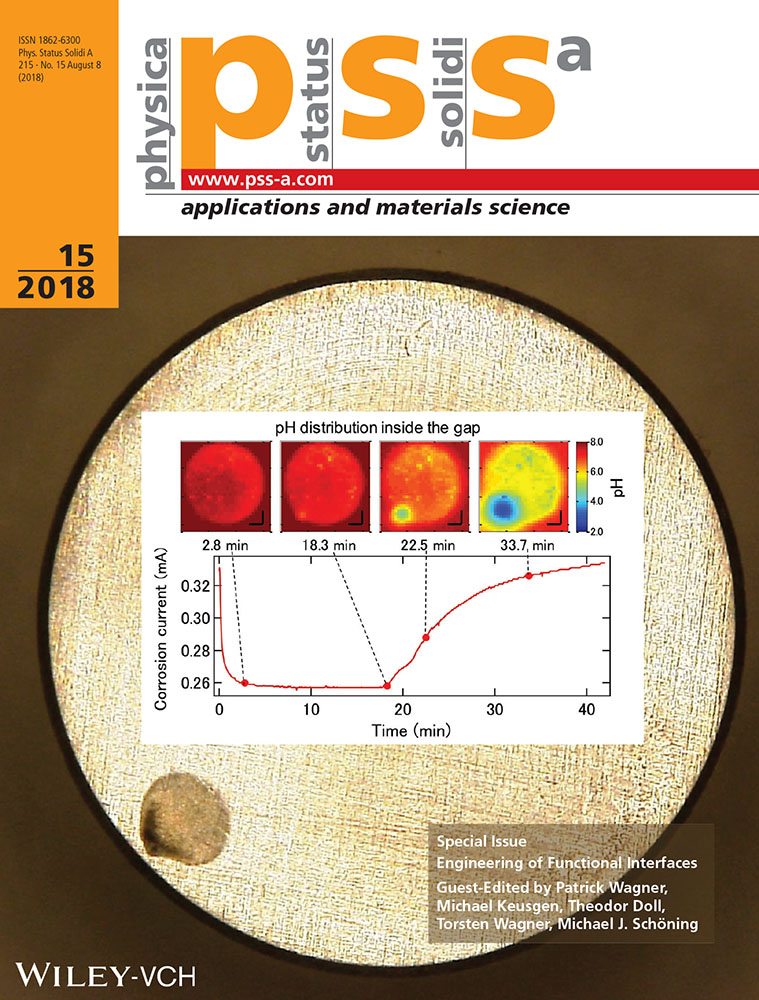Electrochemical Evaluation of Light-Addressable Electrodes Based on TiO2 for the Integration in Lab-on-Chip Systems
Abstract
In lab-on-chip systems, electrodes are important for the manipulation (e.g., cell stimulation, electrolysis) within such systems. An alternative to commonly used electrode structures can be a light-addressable electrode. Here, due to the photoelectric effect, the conducting area can be adjusted by modification of the illumination area which enables a flexible control of the electrode. In this work, titanium dioxide based light-addressable electrodes are fabricated by a sol–gel technique and a spin-coating process, to deposit a thin film on a fluorine-doped tin oxide glass. To characterize the fabricated electrodes, the thickness, and morphological structure are measured by a profilometer and a scanning electron microscope. For the electrochemical behavior, the dark current and the photocurrent are determined for various film thicknesses. For the spatial resolution behavior, the dependency of the photocurrent while changing the area of the illuminated area is studied. Furthermore, the addressing of single fluid compartments in a three-chamber system, which is added to the electrode, is demonstrated.
Conflict of Interest
The authors declare no conflict of interest.




